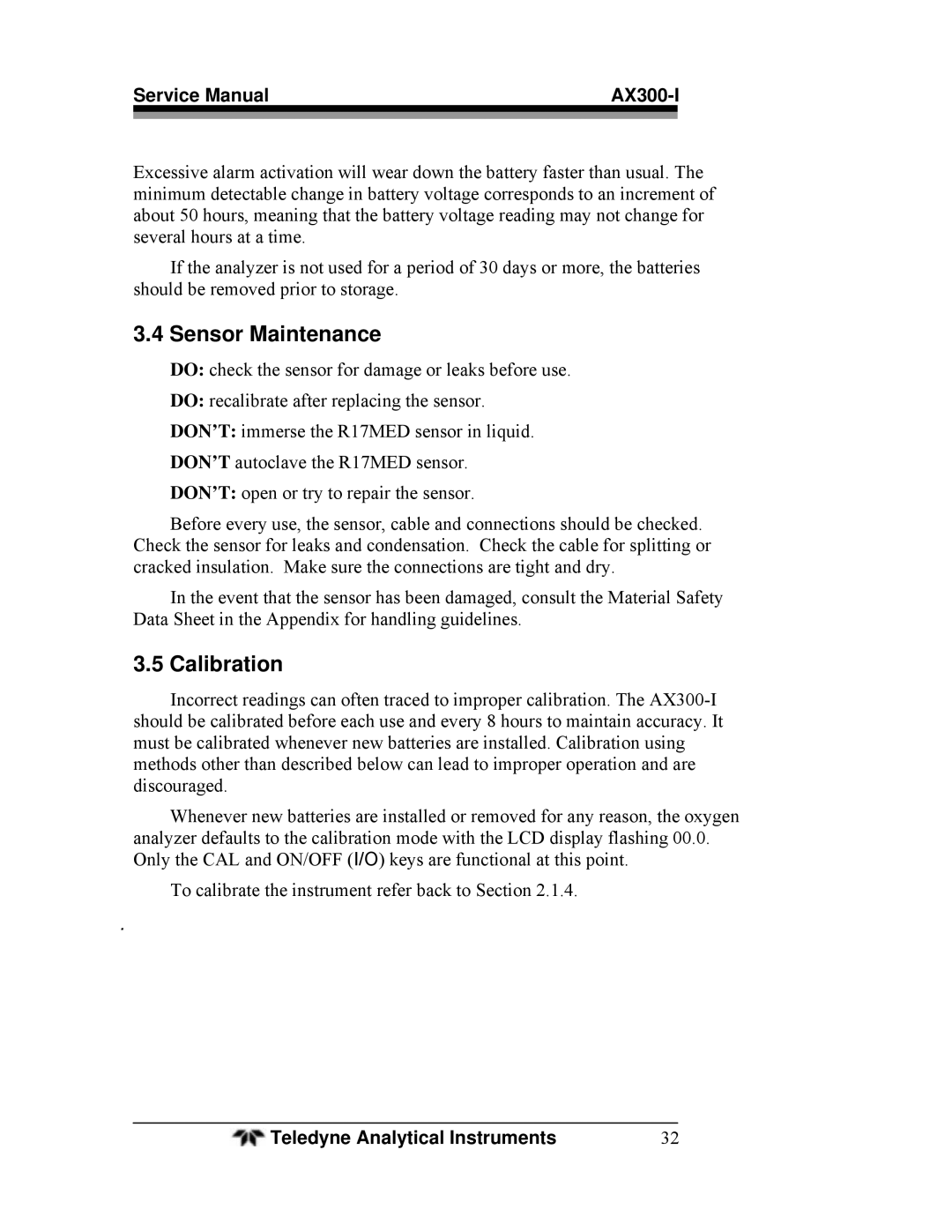Service Manual |
| |
|
|
|
Excessive alarm activation will wear down the battery faster than usual. The minimum detectable change in battery voltage corresponds to an increment of about 50 hours, meaning that the battery voltage reading may not change for several hours at a time.
If the analyzer is not used for a period of 30 days or more, the batteries should be removed prior to storage.
3.4 Sensor Maintenance
DO: check the sensor for damage or leaks before use.
DO: recalibrate after replacing the sensor.
DON’T: immerse the R17MED sensor in liquid. DON’T autoclave the R17MED sensor. DON’T: open or try to repair the sensor.
Before every use, the sensor, cable and connections should be checked. Check the sensor for leaks and condensation. Check the cable for splitting or cracked insulation. Make sure the connections are tight and dry.
In the event that the sensor has been damaged, consult the Material Safety Data Sheet in the Appendix for handling guidelines.
3.5 Calibration
Incorrect readings can often traced to improper calibration. The
Whenever new batteries are installed or removed for any reason, the oxygen analyzer defaults to the calibration mode with the LCD display flashing 00.0. Only the CAL and ON/OFF (I/O) keys are functional at this point.
To calibrate the instrument refer back to Section 2.1.4.
.
Teledyne Analytical Instruments | 32 |
